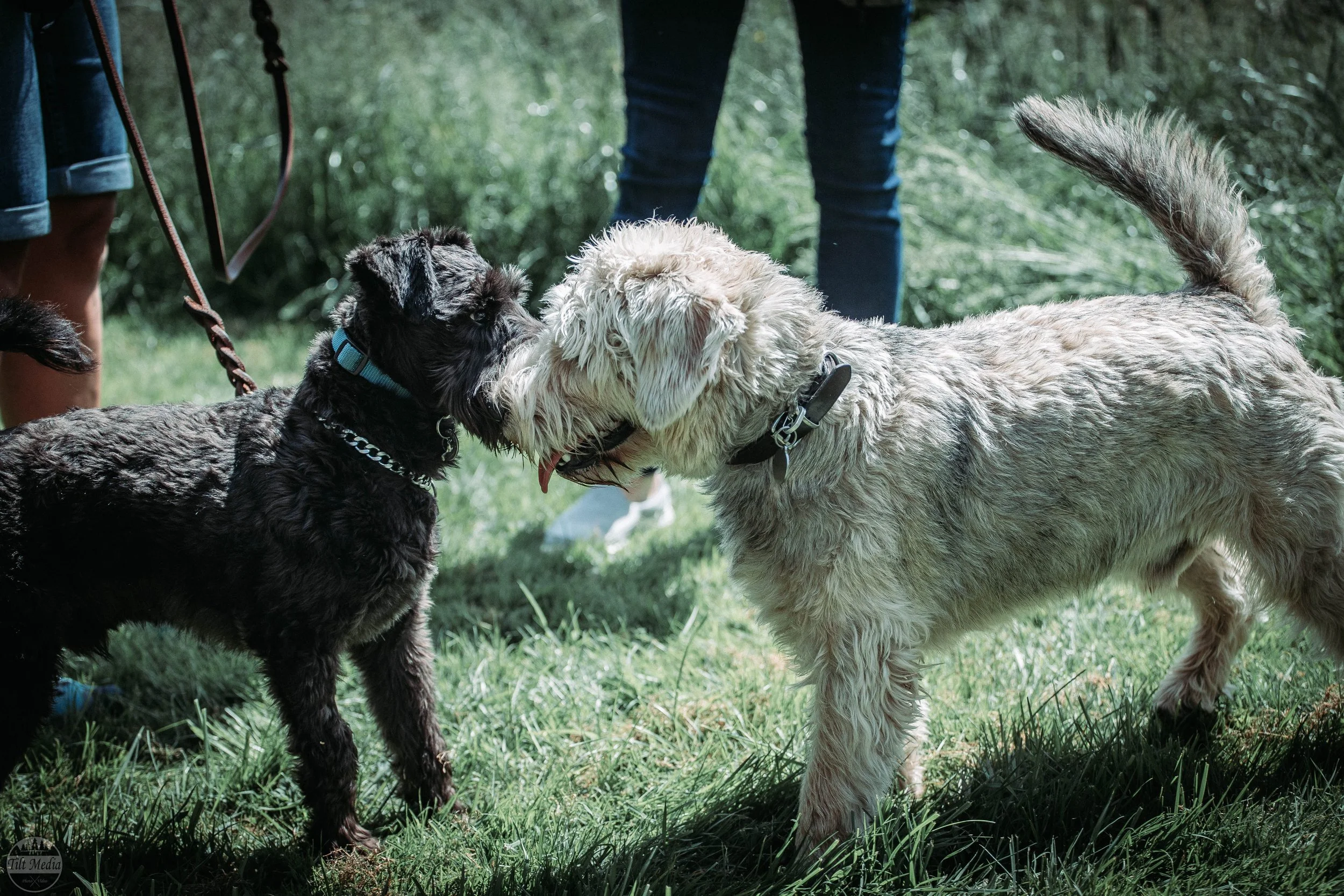how to Keep your anxious dog safe
“Please help me, my dog has been attacked and now she is trying to attack other dogs.” Sadly, this is not unusual for me to hear, and devastating both for dogs and their guardians. Their once calm and friendly dog or their adolescent companion, has turned into a fearful, aggressive dog overnight, and for months or maybe even longer, walks will become hugely stressful. The irony is that this kind of problem can develop even between dogs who are not initially reactive.
Not so long ago, I was approached by two people within a month of one another, both of whom lived in the same road and both of whom told me that their adolescent dog had been attacked by another dog. They were both sensitive young dogs and hadn’t had a great deal of social experience. The pair of them had met on the roadside, growled a little through uncertainty, and the confrontation developed into a fight. The result was that both of them became reactive to every dog they saw after that, which took months of training and rehabilitation to resolve.
Reactivity is like a virus. It can spread really quickly if we let it.
The solution lies in the relationship you build with your dog, right from the moment you bring her home. As she matures, your dog needs to learn about the human world that we expect her to live in, and that is a pretty challenging task for dogs. She needs your support to keep her safe, happy, and fulfilled. Building a strong bond with your dog includes exposing her to new experiences in a positive way and supporting her in learning social skills. Not all puppies and dogs are comfortable immediately when they meet other dogs and people, so we need to give them the opportunity to grow in confidence in their own time, knowing that we will keep them safe.
That’s fine in theory, but in practice it is so hard when other people’s dogs are not necessarily under control. Long hours of training to show your shy dog that meeting other dogs is fun can be destroyed in an instant when a boisterous, out of control dog pursued by a yelling owner, careers up to her, barking.
So how do you deal with it?
· First, always have your dog on a lead when others are around. This will help to keep her safe. But do what you can to keep the lead loose so she doesn’t panic. Dogs are very adept at feeling our stress down the lead, so if you have a tight lead, she’ll be much more worried.
· Try what you can to turn and walk away to keep your dog calm and safe. If you think it’s too late to do that, you could try shouting 'Sit!' to the approaching dog. You never know, it might work.
· Try throwing treats for the other dog, but make sure your dog knows they are not for her by practising throwing treats and asking her to look at you instead of chasing them.
· You could even put up an umbrella between you and the dog but, once again, take care that your dog is comfortable with it before you try.
There are many ways to gain your dog’s attention when they are anxious but getting away is really the best and safest way to deal with it initially.
If everyone were to put their dogs on lead when others approach, or at least called their dogs to their side, these kinds of problems would arise so much less often. Helping dogs to get on well together starts with keeping them calm and safe. Ideally, that means close to you and giving you their attention. If our dogs were taught to come to us when other dogs appeared, they would learn a great recall, you and the other dog’s owner could mutually decide if off-lead play is a good idea, greetings would be calmer and under control and your dog would learn that you can keep her secure, which will strengthen your bond. Everybody wins!
Over the years I have heard many objections to this suggestion. Here are some of the most common and my reaction to hearing them.
My dog is friendly.
Well, I’m afraid mine isn’t!
This is what dogs do.
No, this is what untrained puppies do. We need to teach them to respect one another’s space and greet like adults.
It’s a free country, why should I?
When your dog charges up to an anxious, under-socialised dog, they are likely to be attacked. Many will run away but some will fight back. Either way it will be a nasty experience for your dog, and it may well result in him becoming reactive himself.
Mine won’t come when I call.
Put him on a long training line and practise until he does. You need to keep him safe and not allow him to terrorise others.
Please be considerate to dogs you meet who may not have the social skills that yours has. They are all doing what they can to learn about the world they live in. Especially in post-COVID times, there are many dogs that need our support to relax when out in the world. As a community, our support by keeping our own dogs calm and under control will go a long way to reducing aggression and fear amongst our companion animals.


